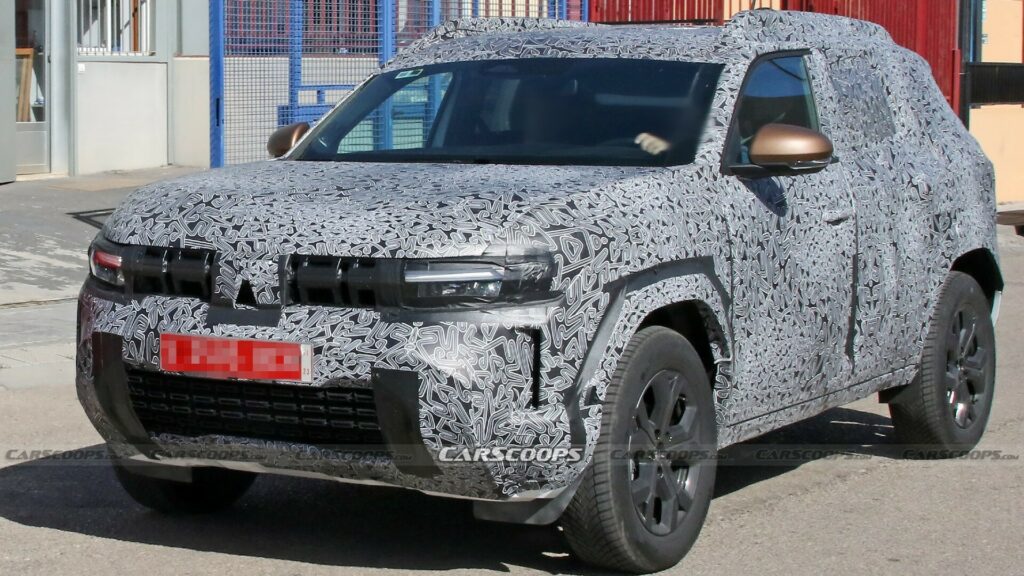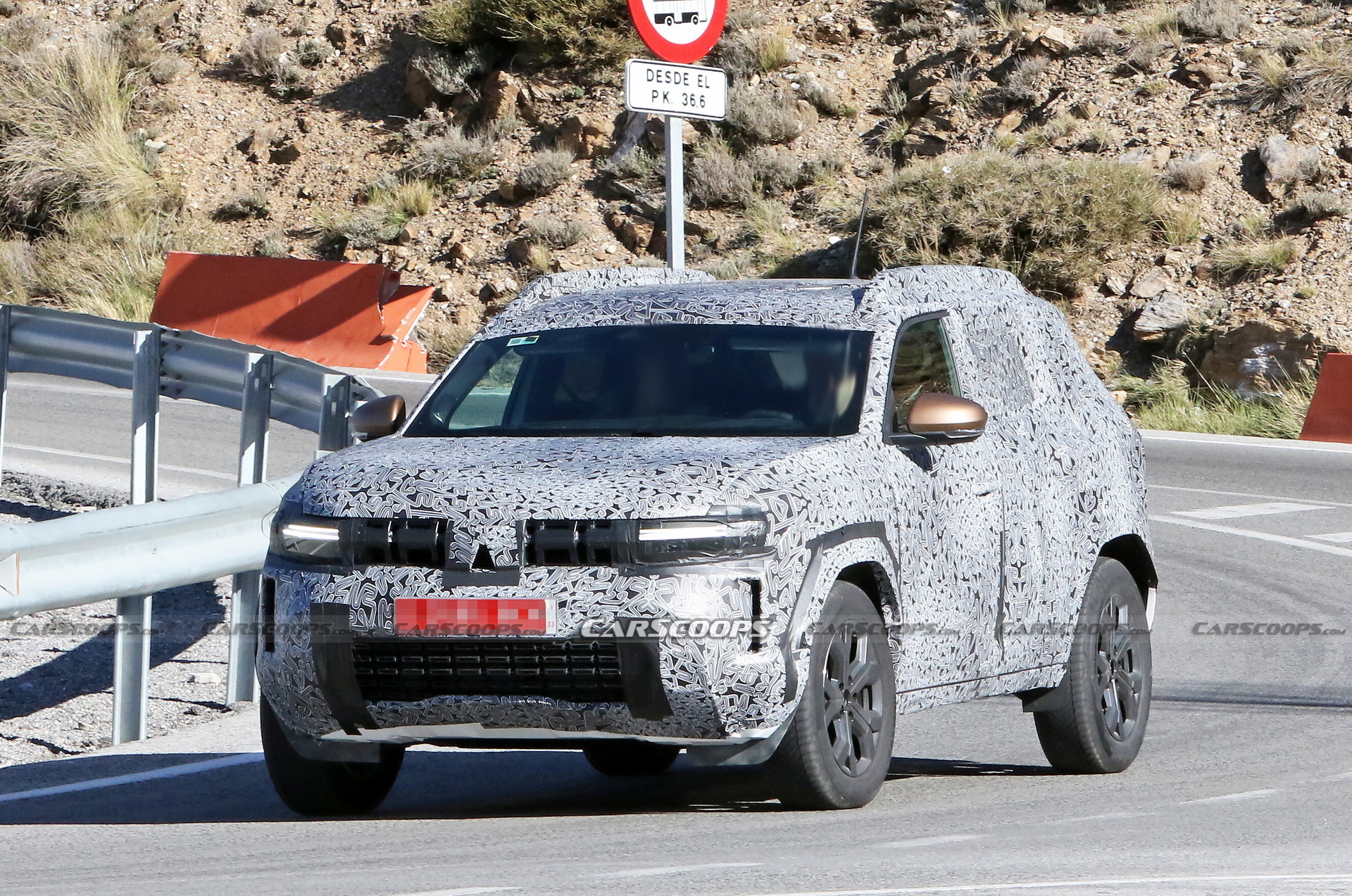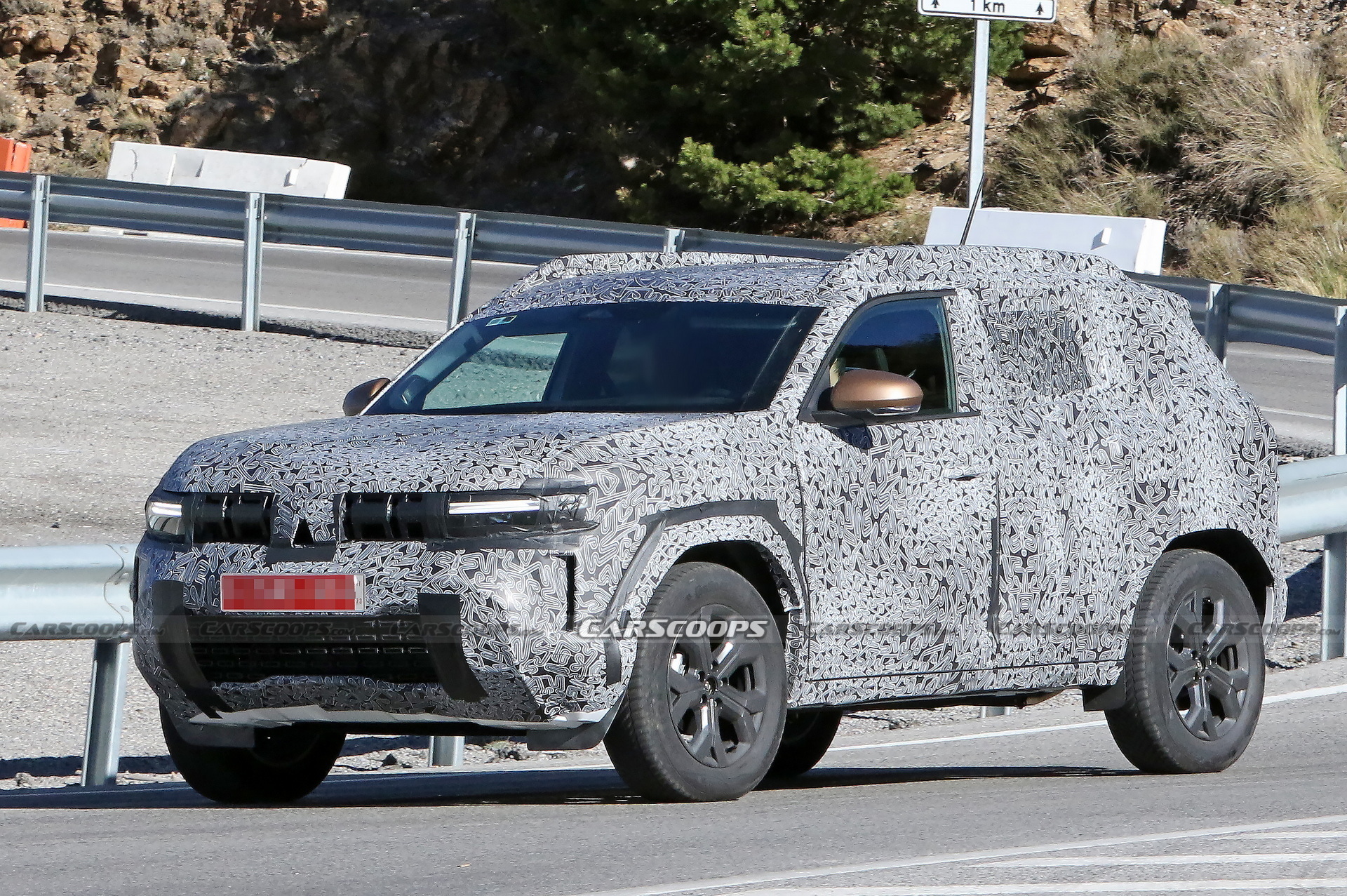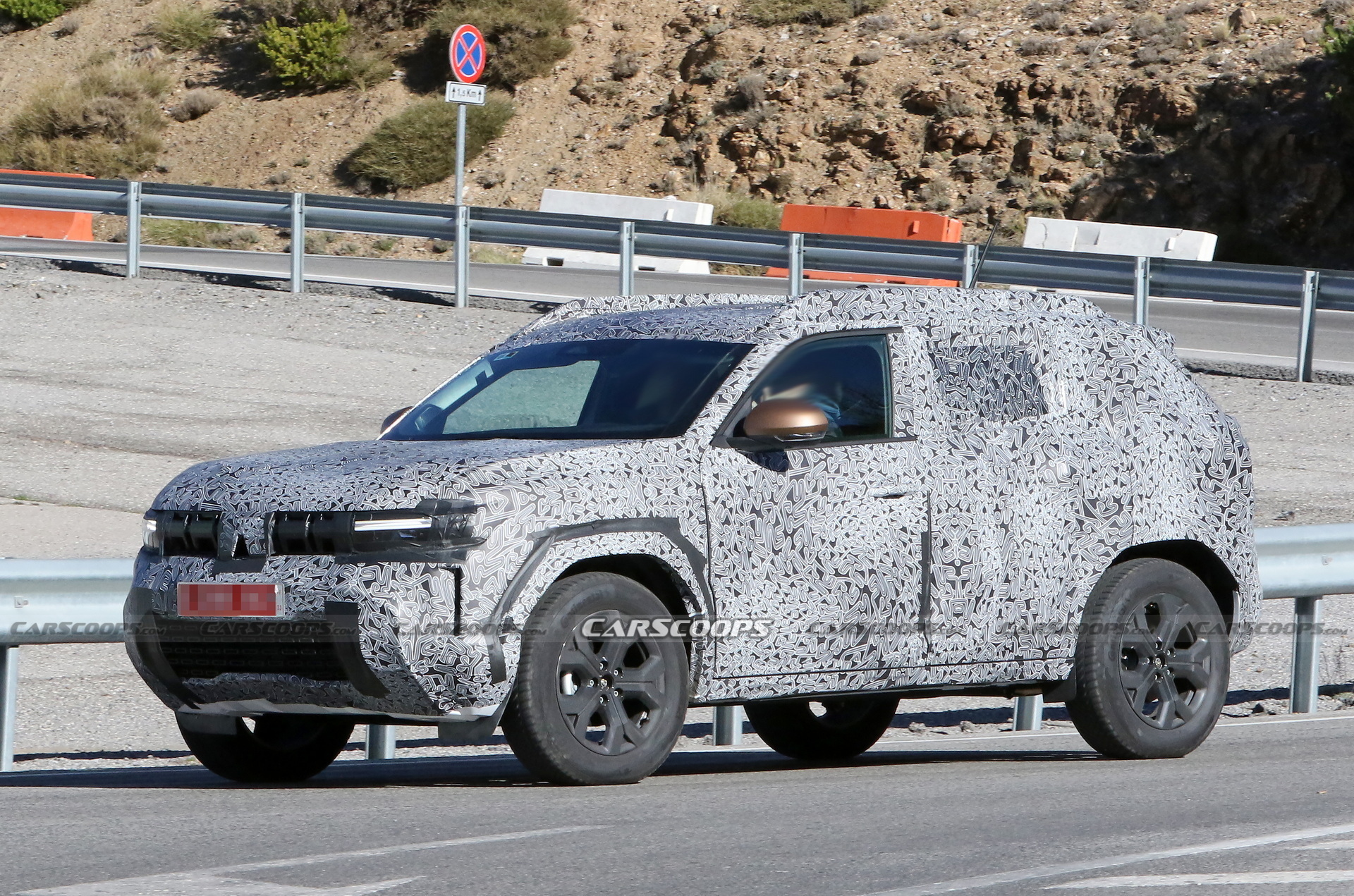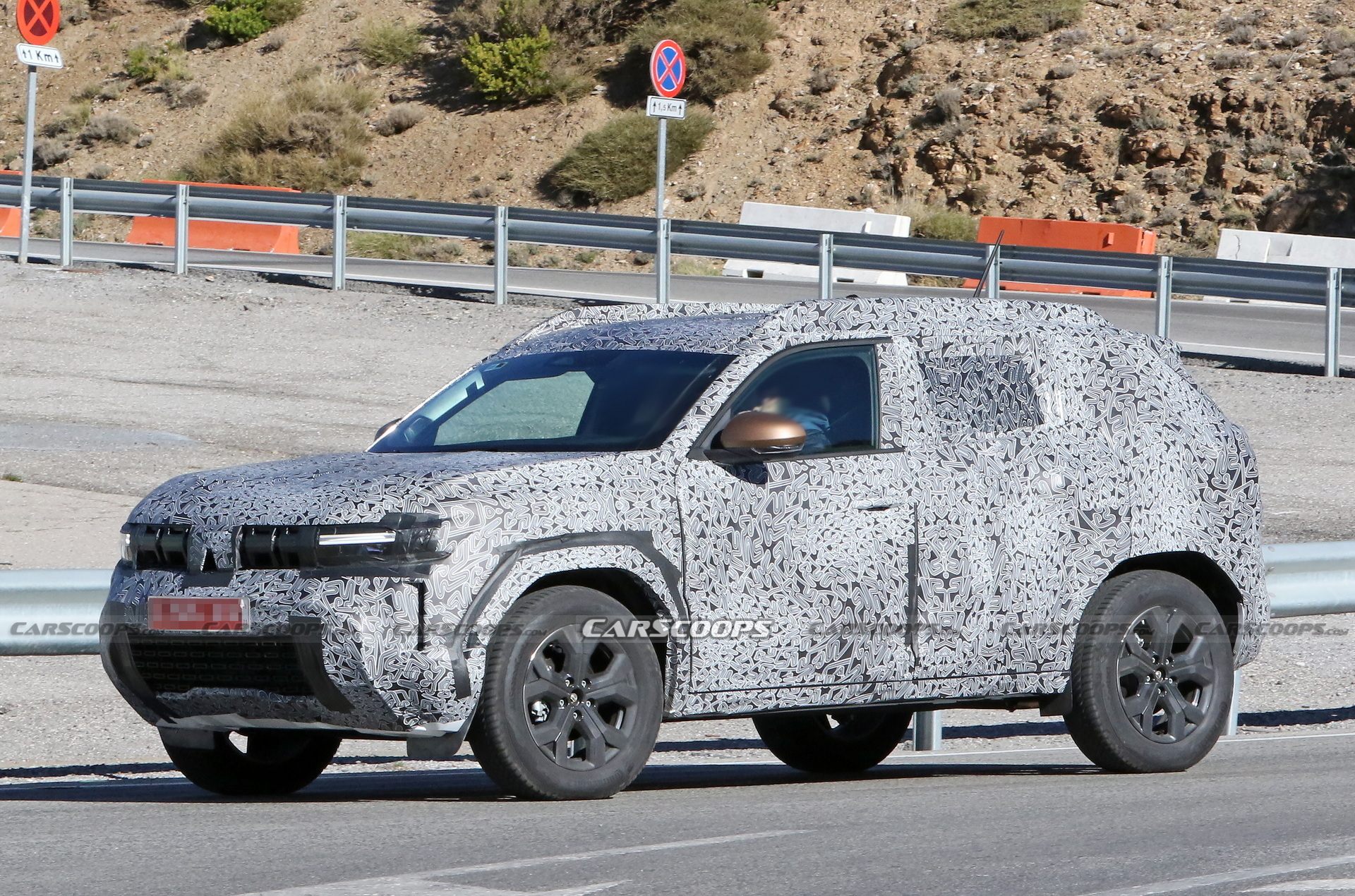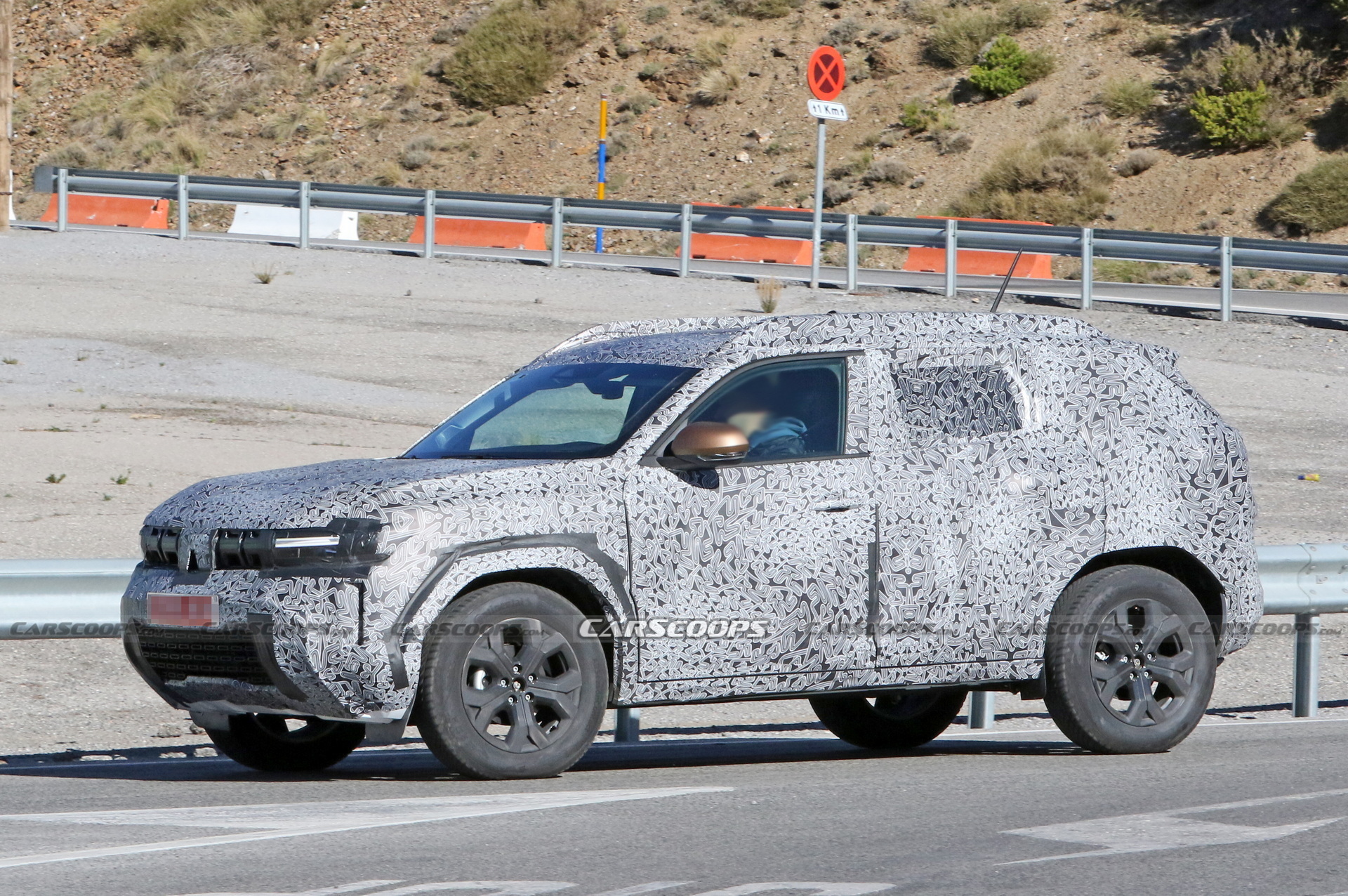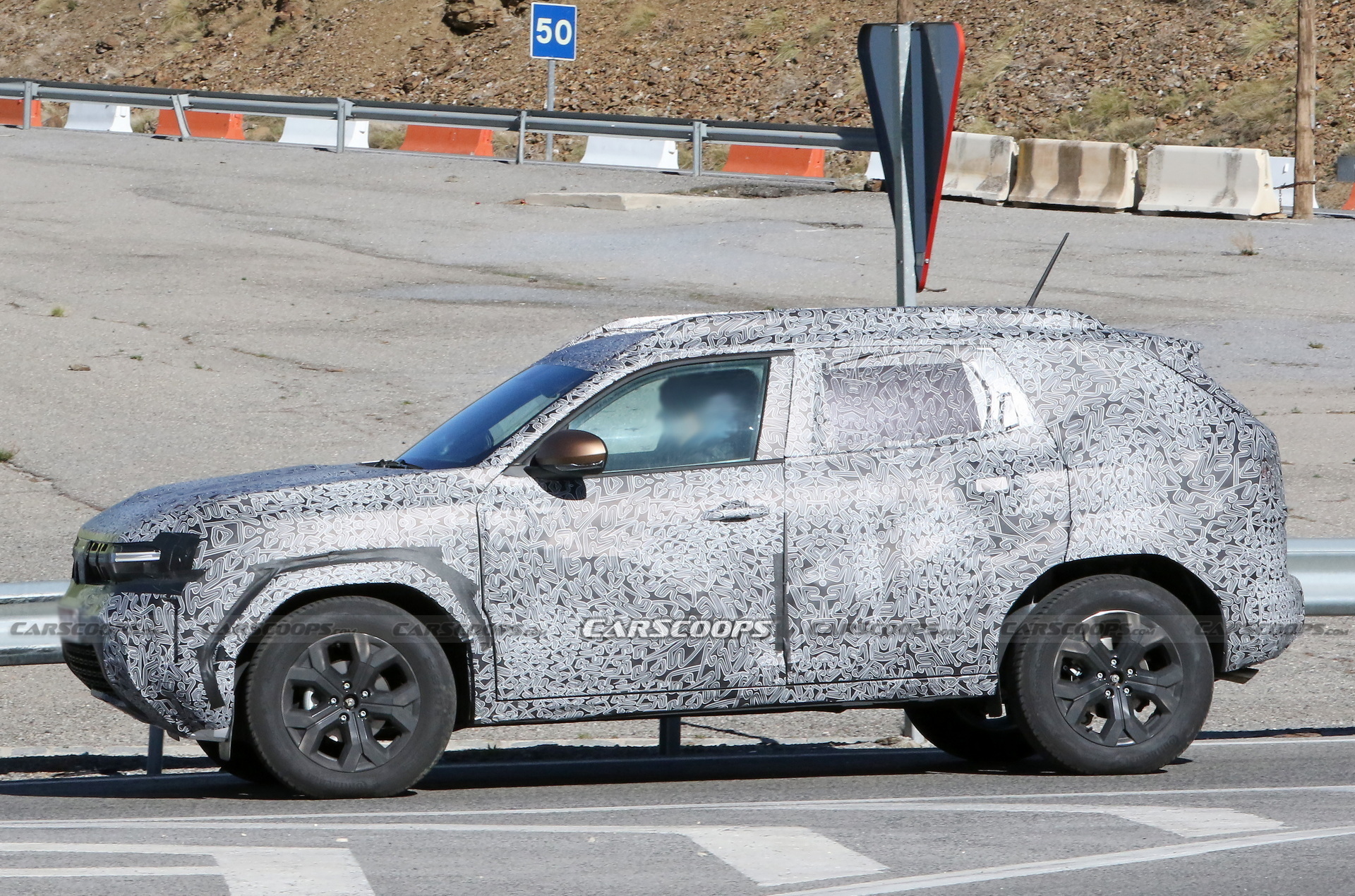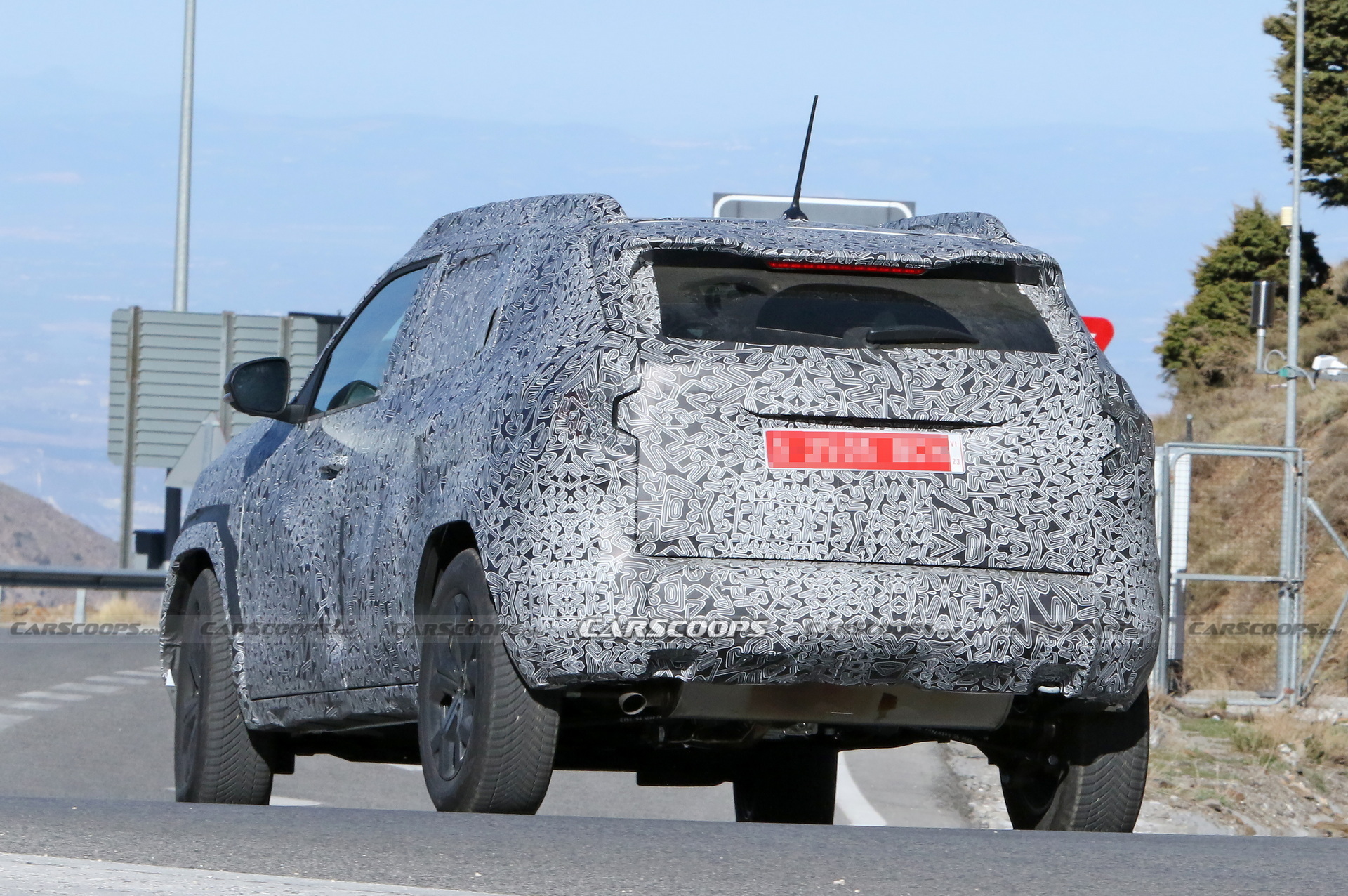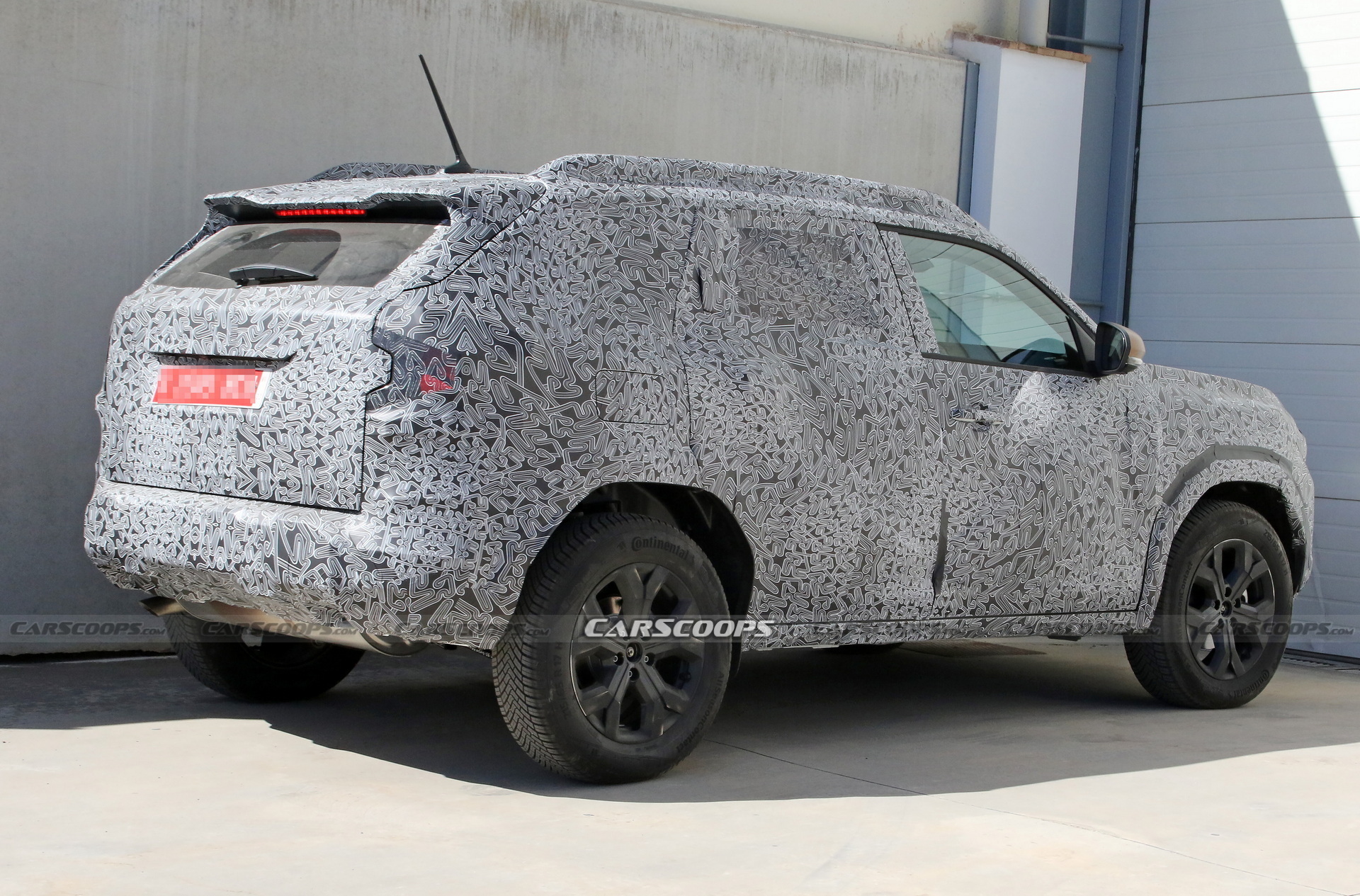We already knew that Dacia is working on the all-new third generation of the Duster which is expected to debut in 2024, and our spy photographers caught a camouflaged prototype out in the open, giving us the first look at its fully redesigned bodywork.
The new budget SUV retains the proportions of its predecessor, but elevates the rugged nature of its exterior design, adopting the firm’s latest styling language. At the front, we can see a pair of slimmer LED headlights flanking the grille which will feature the Dacia link emblem. The bumper features thin side inlets and a larger lower intake which will be likely surrounded by plastic cladding, while the bonnet is chunkier than before.
Read: All We Know About The Next Iteration Of The Dacia Duster Affordable Off-Roader
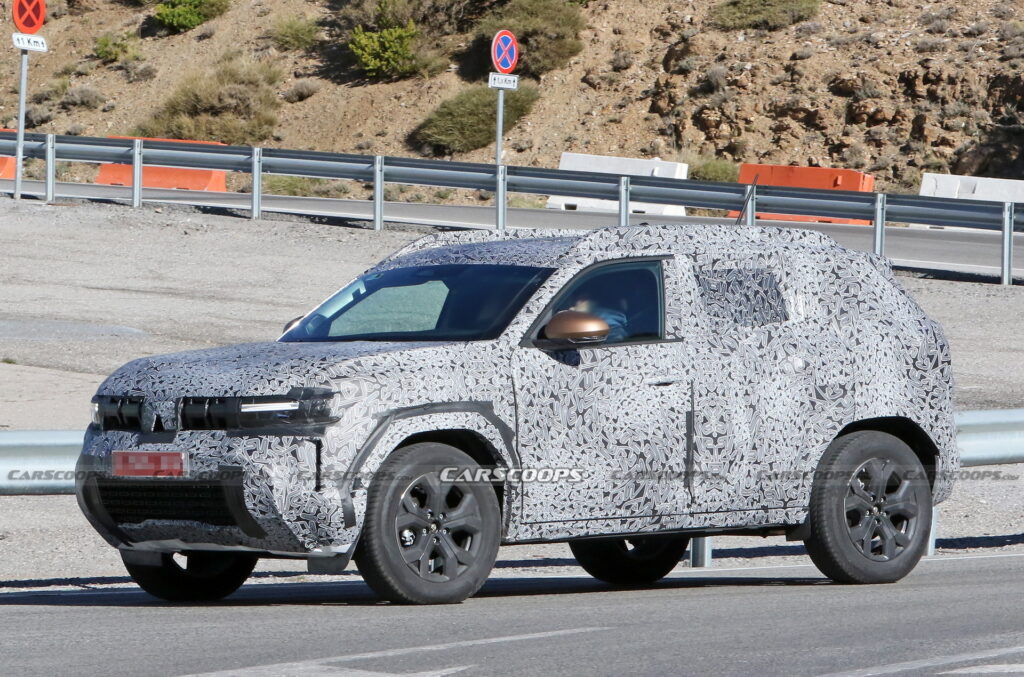
The profile of the Duster gets boxier front and rear fenders inspired by the larger Dacia Bigster concept. The taped sections of the camouflage wrap suggest there is a healthy dose of plastic cladding around the wheel arches. The generous ground clearance combined with the short overhangs are testaments to the off-road credentials of the SUV which have been one of the major selling points of the previous generations alongside affordable pricing and great practicality.
The rear end is also inspired by the Bigster, as highlighted by the Y-shaped taillights. The rear glass is more inclined than the current generation, and the rear spoiler adds a sporty note to the design. We can also see the prominent roof rails which will most likely feature Dacia’s modular system that is already present in the Sandero Stepway and Jogger.
We haven’t yet seen photos of the interior but judging from Dacia’s other offerings we expect the Duster to retain a more utilitarian approach with a smartphone dock replacing the infotainment in base trim and minimum ADAS features. However, the company will certainly keep offering the Extreme flagship trim, which comes packed with features, utilizing durable materials for the upholstery as a nod to the adventurous character of the model. The new Duster could also offer a more spacious cabin, as it is expected to grow in size compared to its 4,341 mm (170.9 inches) long predecessor.
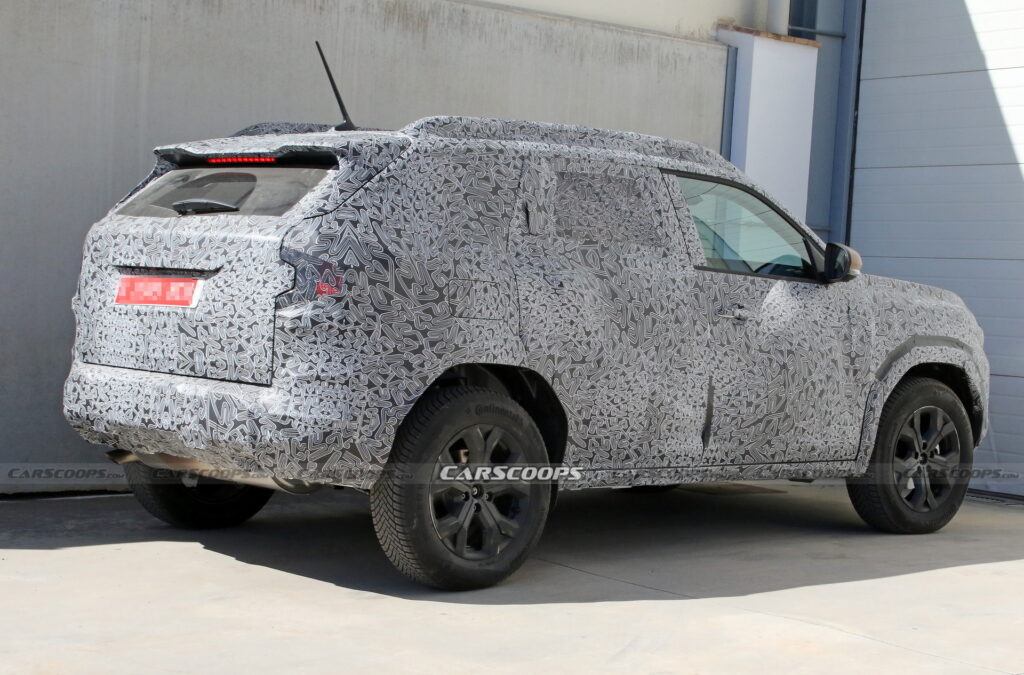
The third generation of the Dacia Duster will finally move away from the aging B0+ underpinnings of the outgoing model which was originally introduced in 2017. It will be based on the newer CMF-B architecture that is already underpinning the Renault Clio / Captur, the Nissan Micra / Juke, the Mitsubishi ASX / Colt, as well as the Dacia Sandero / Logan / Jogger family. A stretched version of the same platform will also be used in the larger Dacia Bigster that is coming in 2025. The new underpinnings are expected to improve the driving dynamics and ride quality of the Duster and hopefully won’t take away from its off-road credentials.
Engine options will most likely include the turbocharged 1.0-liter petrol and bi-fuel engines, although the diesel could be dropped from the range due to Europe’s stricter emission regulations. At some point in the future, the Duster is expected to gain Renault’s self-charging hybrid powertrain that was recently applied to the Jogger, combining a naturally-aspirated 1.6-liter engine with two electric motors, a 1.2 kWh battery pack, and a multi-mode gearbox. Just like its predecessors, the Duster will be available in all-wheel-drive form, although most variants will be front-wheel-drive.
Dacia has sold more than 2 million units of the Duster since its debut in 2010 and surely hopes that the new generation will continue the success of its predecessors. Thus, the company is doing its best to keep the pricing as low as possible, at a time when cars get more and more expensive.




